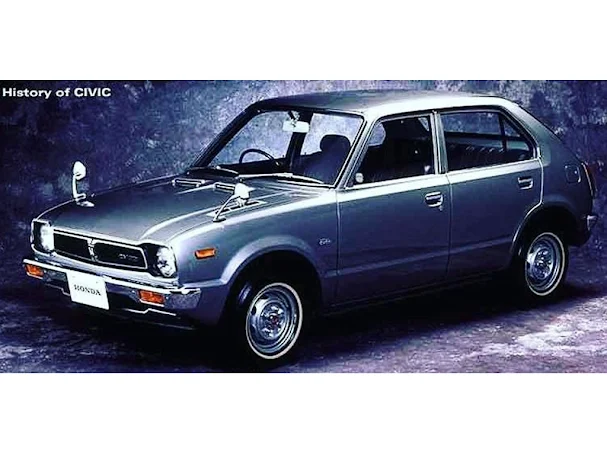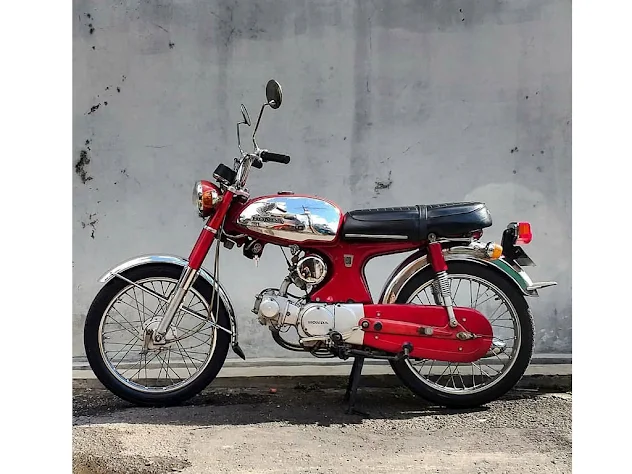History and Development of the Honda Automotive Industry
Honda is a Japanese manufacturer of cars, trucks, motorbikes and scooters which was founded by Soichiro Honda on September 24 1948 in Japan.
Honda Motor Company, Ltd., is a Japanese manufacturer of cars, trucks, motorbikes and scooters which was founded by Soichiro Honda on September 24 1948 in Hammamatsu, Japan. Not only that, Honda also produces all-terrain vehicles (ATVs), electric generators, marine engines and garden equipment.
Initially Honda only focused on producing motorbikes . This was proven by the launch of its first motorbike in 1949, namely the Honda D-Type. This motorbike is made of a steel frame which is equipped with suspension on the front and rear wheels. This motorbike's engine is 98cc and has a maximum speed of 50 miles per hour.
Then in 1954, Honda launched a scooter which was very popular at that time, namely the Juno K-Type. This scooter is here to be able to compete with the well-established Fuji Rabbit and Mitsubishi Silver Pigeon. The scooter's initial appearance featured a tilt-back windshield and built-in signal lights, and also introduced Fiber-Reinforced plastic body construction to Japan .
After producing various types of motorbikes, Honda exported its motorbikes for the first time to the United States (US) on June 11 1959, while opening a factory in Los Angles with its first number of employees, only six people.
Honda began entering the car industry after World War II, after its competitors Toyota and Nissan had already started. Honda made its debut in the car industry by making the Honda Civic Hatchback, a car which at that time was famous for its economical use of fuel and very low levels of toxic exhaust gas without a Catalic Converter in the exhaust.
With the Civic, Honda introduced its first technology as optional equipment, which was then used as standard equipment for Honda car products to this day. Some of these technologies include anti-lock brakes, speed-sensitive power steering , and multi-port fuel injection.
Then the Honda Civic and Accord were also used as references for producing other Honda cars. These two cars are long-lasting products, which always use front-wheel drive. This then became Honda's tradition of using front-wheel drive in subsequent car products.
The Civic is a compact car developed and produced by Honda in 1972 in North America and has been named the second oldest Japanese car after the Toyota Corolla which was introduced in 1968. The Civic, together with the Accord and Prelude, were Honda car products marketed in North America until 1968. 1990. Until now, the Honda car product line in the global market consists of Civic, Jazz, Accord, Insight, CR-V, CR-Z, Freed Legend and 2 versions of Odyssey.
Honda's presence in Indonesia
Honda first arrived in Indonesia in 1960, and immediately took over the Indonesian automotive market , which at that time was dominated by Europe and America. Without wasting much time, in 1963, Honda immediately launched its first car in Indonesia, namely the Honda T360, to replace European and American cars.
In 1972, Honda launched its second car, the Honda Civic, as a 2-door coupe, which was then followed by a 3-door hatchback version in the same year. Entering 1994, PT Honda Prospect Motor (HPM) was established which became the sole agent for the Honda Brand Holder (APTM) in the Indonesian market. HPM is a collaboration company between Honda Motor, Co. Ltd., with PT Prospect Motor.
In 2003, Honda began to make Indonesia a car production base by establishing its first factory in Karawang , West Java. This factory has a production capacity of 80 thousand units per year. At the same time, Honda also launched the Honda Jazz, which is a 5-door hatchback .
In 2011, Honda launched another new product, this time from the Low Cost Green Car (LCGC) segment, namely the Honda Brio Satya. The increasing Honda brand and market demand for its new products made HPM build its second factory in 2012 and the construction was completed in 2014, with an annual production capacity of 120 thousand units. Thus, the two HPM factories are capable of producing up to 200 thousand units of vehicles per year.
Trying to expand its wings in several four-wheeled vehicle segments in Indonesia, in 2013, Honda launched a mini MPV with Honda's Global Small Platform concept called the Honda Mobilio.
Some of the HPM products that have been launched in Indonesia include Honda Brio, Honda Mobilio, Honda BR-V, Honda Jazz, Honda H-RV and Honda CR-V.
Honda Motorcycles
In the motorbike industry, Honda arrived in Indonesia on June 11, 1971 through PT Federal Motor, which is currently known as PT Astra Honda Motor (AHM). At that time, PT Federal Motor only assembled Honda motorbikes, while the components were imported from Japan in CKD (Completely Knock Down) form.
The first motorbike produced by Honda for the Indonesian market was the S90Z, a business type motorbike which is the next generation of the Honda type S90. This motorbike has a 4 stroke engine with a capacity of 90cc. At that time, Honda's production volume in the first year was only 1,500 units, but this number continues to increase from year to year until now.
Then in 1973, Hoda tried to present a motorbike with a higher capacity than the S90Z model. The motorbike is a Honda Benly S110, which was imported directly from Japan. Its presence has attracted a lot of interest from motorbike users in Indonesia, especially since it is Honda's first 100cc motorbike in Indonesia.
Entering 1982 to 1984, Honda released the CB100 and CB125 with a more attractive appearance than the Benly S100. The round shape of the tank and the engine's increased performance have made these two motorbikes a favorite of Indonesian motorbike users.
Even though these two motorbikes are considered old vehicles, to this day many people still use them for collections and as the main material for custom motorbikes, especially for fans of classic motorbikes.
Entering 2001, developments in economic conditions and the Honda motorbike market continued to increase. This is because the share ownership composition of this motorbike manufacturer has changed. PT Federal Motor and several of its subsidiaries were merged into one under the name PT Astra Honda Motor, with a share ownership composition of 50 percent held by PT Astra International Tbk and 50 percent owned by Honda Motor Co. Japan.
The production capacity of the four factories reaches 5.8 million motorbike units per year, and will continue to increase in line with the increasing demand for motorbikes in the country. In fact, in 2015, PT AHM succeeded in making an achievement by achieving production of 50 million, and this was the first achievement achieved by the motorcycle industry in Indonesia, even at the ASEAN level .
Until now, several types of Honda motorbikes in Indonesia include the automatic or scooter lines, namely Beat, Spacy, Scoopy, Vario and PCX. The motorbike line is filled with Blade, New Supra X, Supra GTR, Revo, Sonic and CS1. Honda's flagship sport motorbike variants include the Sonic, New CBR with capacities of 150 and 250 cc, and the RC214V-S.








Post a Comment for " History and Development of the Honda Automotive Industry"
Before writing a comment, you must read the terms below:
1. It is not allowed to put active links,
2. There must be no elements of rioting or pornography.
3. If you create spam, your comment will be deleted, and
4. Please ask questions and share your thoughts in good and constructive sentences.